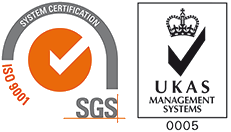Habiba AL Mar’ashi : protecting the Environment is a Shared Social Responsibility
Achieving sustainable development goals doesn’t depend only on the work of institutions or individuals. It also needs many pillars to build on such as developing community awareness campaigns, implementing training activities, and spreading the culture of teamwork by local and federal government bodies concerned with environmental affairs, in addition to sharing educational means in all its stages.
Habiba Al Mar’ashi is an Emirati environmental activist whom in 1991, founded the Emirates Environmental Group an environmental nongovernmental organization (EEG) working in Dubai, United Arab Emirates (UAE).
In an interview with Flashes, she talks about the outstanding challenges in her activism and highlights her plans to raise awareness of sustainable environmental concerns. Randa Gerges met her during the Knowledge Summit 2019.
What is the role of NGOs in supporting sustainable development?
There are many responsibilities that fall on non-governmental organizations, ranging from humanitarian aspects to social and environmental elements. For example, “Clean Up UAE” campaign, which was launched in 2002 as a popular initiative to activate the role of all social groups in protecting the environment, has become a real initiative to spread awareness among individuals on how to dispose waste in the right way.
The quantities that we collected from the desert and cities were initially enormous, but there is drastic reduction in the quantities compared to the past. I hope to see the day when our streets are completely clear of waste, when throwing garbage and waste in the designated boxes become the norm and the way of life in the society, in line with the sustainable development goals.
How do you contribute to spreading environmental awareness within the society?
We consider that our mission as a team of the Emirates Environment Group starts from strengthening the role of future generations in consolidating the factors of sustainable development and environmental awareness. Since its inception, EEG has been promoting the protection and respect of natural resources through attracting young men and women to initiatives, workshops, training courses and awareness programs, as well as various environmental competitions for students from primary to university level. Students are involved so that they can develop future plans and solutions to environmental challenges in the society, in addition to emphasizing the role individuals can play in protecting the environment.
How do you mobilise young people to embrace sustainable development?
Awareness of the importance of sustainable development and its benefits is one of the most important ways to encourage young people to embrace it and achieve its goals, as they must realize that they are its primary beneficiaries. We need to promote in their circles the idea that we, as human beings, are all charged with preserving the planet we live in and that if we negate that role it can endanger us and all the organisms that live with us.
There is a need to understand the impact of our irresponsible behavior on this environment. In the school community, there are amazing results that students achieve until the end of high school. As for students in universities, they spend about four years of study without paying attention to environmental issues. When we engage them, we seek to achieve high success rates in this context with these young people.
What methods can be employed to create environmental awareness among college students?
University managers should start with believing in the importance of awareness of sustainable environmental development. They need to make the environment an essential part of the curriculum, focusing on theoretical subjects and practical applications, classifying them according to the vision of the teaching staff by including them in the departments of the environment, society or economics.
We n ote t hat s tudents a re e ager t o participate, contribute and volunteer but they do not know how to start. Therefore, the role of universities is to direct them on the right path and to involve them in strong environmental platforms.
What is the role of sustainable environmental development in production?
There i s a strong correlation between sustainable environmental development and its role in activating the production plan. For example, modern mobile phone companies usually make improvements by prompting customers to buy latest phones and get rid of old ones, leading to an influx in the rate of e-waste in the world.
When they manufacturers devised a plan to dispose of this waste, they noticed that these old phones contained many raw materials and expensive items such as gold, silver and copper.
They allocated a budget for recycling, they found that this method would reduce their costs, and provide them with approximately 80% of the raw materials used in manufacturing new phones. The percentage of hazardous waste to be disposed of according to international standards was reduced to only 20%. All global institutions today are required to reduce their carbon footprint, to limit the use of harmful substances that enter production lines and leave a negative impact on the environment because of the waste generated by them.
It must also be noted that there is an inverse relationship that depends on reducing consumption with increasing efficiency, and the result is obtaining more economic benefit. The more we devise ways to take advantage of used materials and waste, the more successful the production plans will be.
What are your future plans for achieving sustainable environmental development?
In 2020 we will start with the competition for environmental painting for schools. We will present within the choices for the student, a model for the environment under the title “My Sustainable School” that includes solar panels, agriculture, drip irrigation system, and learn how to recycle everything that surrounds the school and is used by natural daily activity.
We also aim to include a book about the environment within the framework of art in educational curricula. in addition to the continuation of initiatives, campaigns and activities that we carry out throughout the year, Our happiness will also be completed with the participation of many volunteers who are keen to maintain a clean and healthy environment.








